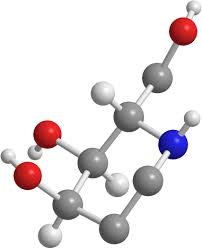Methodology of Simulation in Molecular Nano-Dynamics of Single-layer and Multilayer Nanotubes (Research and Design) Based on Nano-Microelectronics (Doctoral-Research)
Researcher and author: PhD student Afshin Rashid
Note: Theory, modeling, and simulation are widely used as predictive design tools in the propagation and fabrication of SWCNTs and SWCNTs nanotube molecules.
General methods capable of performing multiscale / multidimensional molecular simulations to develop SWCNTs and SWCNTs nanotubes and new nanoscale systems and tools will be developed. Dynamic nano-molecular simulations will help in various fields such as biosensor biosensors , filter design, as well as dynamic detection of complex single-layer and multi-layer nanotube systems .
Deterministic Molecular Dynamics Simulation: A method used to calculate the direction of movement of atoms or molecules in multi-atom systems of more than ten atoms to billions of atoms.
Monte Carlo simulation (Stochastic): is a numerical method that attempts to reach the final equilibrium state of the system by sampling the important nano-molecular state space. Based on the probabilities, this approach approximates the configuration of the investigated system to Minimum Energy Conditions .
Initio Ab Molecular Dynamics : Initio Ab molecular dynamics, or quantum molecular dynamics, tracks the path of the atomic system by solving the Schrödinger equations and obtaining information on a sub-atomic scale.
Simulation methodology in molecular nano-dynamics of nanotubes is from the art of manipulating materials at atomic or molecular scale and to making nanotubes and devices; micro or nano-sized components and devices with nano-scale performance; Nano devices and devices based on the manipulation of individual atoms and molecules to create a complex structure with different nanomolecular properties. In fact, most of the interesting phenomena observed at the nanoscale are due to the importance of the effects (quantum mechanics) and the properties of the wavefront properties of the particle (and surface effects).
In the simulation methodology in the molecular nanodynamics of nanotubes the most complex is the influence of particle size on the magnetic properties of the material. A ferromagnetic mass material is known by magnetic fields, each containing thousands of atoms. In a magnetic field the direction of rotation of electrons is the same, but different magnetic fields have different directions of rotation. Magnetic phase change occurs when a large magnetic field aligns all magnetic fields in one direction. For example, in the case of nanoparticles, no specific magnetic fields can be seen. Thus, it is thought that there will be simpler systems in the structure of nanomolecules and materials; small magnetic particles and even non-magnetic solids with small grain sizes exhibit a new kind of magnetic properties. These properties are affected by the quantum property of particle size.
Conclusion :
The purpose of simulation methodology in molecular nano-dynamics is to interfere with how atoms and molecules are arranged and to use materials and systems with new capabilities and new work, all of which are the result of specific amplification of molecules and particles. Nanotechnologies are small-sized devices and nanostructures
Author: Engineer Afshin Rashid
PhD student of Nano-Microelectronics at Islamic Azad University, Science and Research Branch, Tehran





